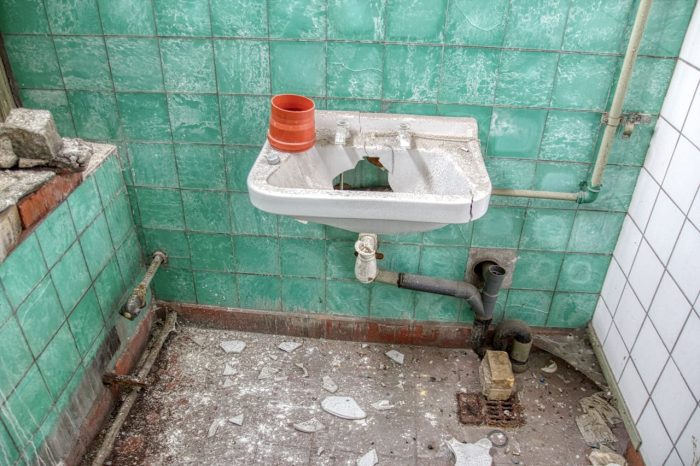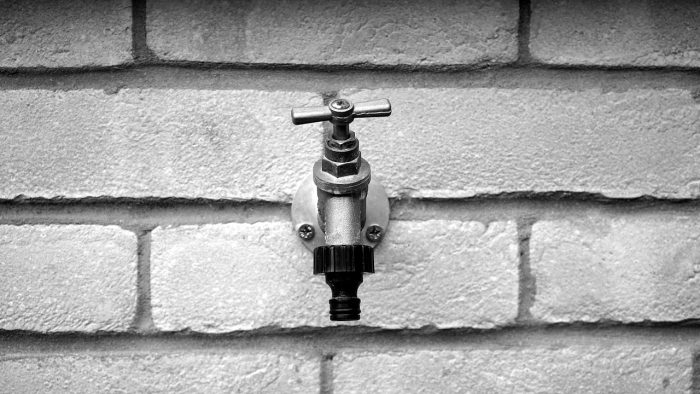
An integral part of every house, the plumbing system not only allows for the conveyance of wastewater but also guarantees the supply of potable water for use in bathing, cooking, and drinking. A carefully planned plumbing system of valves, fixtures, and pipes ensures the system’s smooth and risk-free operation.
The supply system is the backbone of any plumbing system. It is responsible for bringing potable water into the house. A main water line that connects to either a private well or the municipal water supply is the usual way that water enters a building. Afterwards, a network of pipes carries the water to different appliances, toilets, sinks, and showers. Pipes of this type are typically constructed from long-lasting and secure materials such as PEX, copper, or PVC.
Drainage systems work in tandem with supply systems to collect wastewater and direct it to designated locations, such as a municipal sewer system or septic tanks, without contaminating the water. Using vent pipes to avoid gas buildup and ensure free flow of wastewater, this section of the plumbing system depends on gravity to transport waste down the pipes.
Types of pipes used in a plumbing system:
Many different kinds of pipes, each designed for a particular function, are used in residential plumbing systems. We will start with the most prevalent ones:
- Flexible hoses
- Hook up home appliances such as faucets, dishwashers, and washing machines.
- They are available in different lengths, are flexible, and are easy to install.
- Have the potential to degrade with use, increasing the frequency of replacement.
- Galvanized steel pipes
- This is commonly used in older homes for water supply lines.
- resilient and long-lasting.
- Its susceptibility to corrosion and rust can have an impact on water quality.
- PVC Pipes
- Installed in DWV (drain, waste, and vent) pipes.
- Low-cost, simple, and straightforward to set up.
- It can warp; therefore, it’s not a good choice for hot water.
- PEX Pipes
- The distribution of both cold and hot water.
- It is chlorine and scale resistant, easy to install, and flexible.
- UV light can damage them; therefore, you might need to get them fitted specifically.
- ABS Pipes
- Systems that handle drain, waste, and vent (DWV).
- Convenient, sturdy, and less weight to set up.
- It deteriorates quickly in direct sunlight, so don’t use it there.
- Cast iron pipes
- The DWV systems seen in older homes.
- High pressures are no match for its extraordinary durability.
- Massive in weight, tough to cut, and rusty after a while.
- Copper pipes
- There are three types: thickest (Type K), medium-thick (Type L), and thinnest (Type M).
- There will be cold and hot water available.
- Bacterium-resistant, long-lasting, and durable.
- Pricey; installation necessitates soldering.
- CPVC piping
- This can supply both hot and cold water.
- Less difficult to work with and withstands higher temperatures than standard PVC.
- Fragile in cold weather, slightly costlier than PVC.
Different kinds of pipes serve different purposes in a home’s plumbing system due to their unique properties.
Supply and Distribution of Water:
- Inside Shutoff Valve
- A crawl space or basement is a common location for this, as it is where the water line enters the home.
- From within your home, you can turn off the water supply.
- Backflow Preventer
- It prevents the reintroduction of contaminated water into the public water system.
- Backflow preventers are mandatory in certain regions.
- Shut-off valve
- In the event of an emergency or maintenance, you can cut off water to your entire house.
- It’s common to find it close to where the water main crosses into the property.
- Pressure Regulator
- When installed, it regulates the water pressure coming into your house so that it is safe and simple for your plumbing system to handle.
- Not every house has a standard pressure regulator.
- House Supply Line
- A network of smaller pipes branches off the main supply line and carries water to various fixtures and appliances in your home, such as sinks, toilets, showers, and even washing machines and dishwashers.
- Main Supply Line
- Your property is connected to the water source through a pipe, which is often buried underground.
- The usual sources of water are private wells or municipal water supplies.
- Water Meter
- Tracks the total volume of water entering your house. For your water provider’s billing purposes, it records the volume of water passing through it.
- A basement or utility box close to the street is a common place to find it.
Drainage and Ventilation Systems
The two most important parts of a home’s plumbing system are the water main and the drains. To ensure wastewater is adequately removed from the residence and to prevent sewage gases from invading the living spaces, the drainage system contains vents and drainpipes, both of which are vital. The plumbing system of a house is designed in a very specific way, and this is how it works:

- Drainpipes
Layout:
Fixture Drains
- Fixture drains are the smallest pipes that lead directly to the fixtures in a plumbing system. For sinks, the standard range is 1.25 to 1.5 inches, but for bathtubs and toilets, the standard range is larger.
Branch Drain Lines
- The main drain line is connected to individual fixtures (showers, toilets, sinks, etc.) through these smaller pipes, which range in diameter from 1.5 to 2 inches. Frequently, their hiding places are in the ceilings, floors, or walls.
Main Drain Line
- This is your home’s largest drainpipe; it transports all the wastewater out to a septic tank or the main sewer line. Usually, you’ll find it in a basement or under the ground.
Function:
- Gravity Flow
Wastewater is directed downward by drainpipes that take advantage of gravity. To avoid clogs and maximize drainage efficiency, the slope must be correct.
- Removal of Waste
The main drain line, and subsequently the septic or sewer system, receive solid waste and wastewater transported by drainpipes from various fixtures.
- Vents
Layout:
- Vent Terminals
The locations where the vents end are above the roof’s level. These locations protect the vent system from debris and rainwater.
- Branch Vents
These smaller pipes link individual fixtures to the main vent stack. Both horizontal and vertical ones are often installed in wall cavities.
- Main Vent Stack
The main drain line is connected to the roof via this vertical pipe. This pipe allows air to enter the drainage system, while simultaneously releasing sewage gases. The main drain line and this pipe often have the same diameter.
Function:
- Pressure Regulation
To keep water flowing freely and prevent trap water seals from being sucked away, vents keep the atmospheric pressure within the drainage system.
- Removal of Sewer Gas
Sewer gases can’t build up in the drainpipes and could seep into the house if vents aren’t installed.
- Airflow
A vacuum would be disastrous for the wastewater system, so vents let air into the drainage pipes.
Key Components:
- Air Admittance Valves
These mechanical valves allow air into the drainage system, so sewer gas cannot escape into the house. This is the preferred venting method when conventional venting is unavailable.
- Cleanouts
Plumbers can repair pipes and remove obstructions at specific locations within the drainage system.
- Traps
Underneath the fittings are U-shaped pipes. They create a seal by holding a small amount of water, preventing sewage gases from entering the house.
Detailed Example:
The bathroom plumbing system
- Shower/Bathtub Drain
It has a trap to contain sewage gases and links to a branch drain line, much like a sink drain.
- Sink Drain
It connects to a secondary drain line, which eventually merges with the primary drain line. You have the option of connecting the sink’s vent pipe to either the main vent stack or a branch vent.
- Toilet Drain
The system connects directly to the main drain line using a pipe with a large diameter, typically 3 to 4 inches.
The kitchen plumbing system
- Sink Drain
It usually comes with a trash disposal. The main drain line is reached via a branch drain line that is connected to the drainpipe. Most kitchen sinks include a vent pipe that leads to the main vent stack.
- Dishwasher Drain
In most cases, it forms a connection with the sink drain prior to the trap.
Installation and Maintenance
- As part of routine maintenance, make sure all traps are watertight, and clear out the vent terminals and cleanouts every so often to avoid clogs.
- To ensure proper installation, all pipes must be fastened securely and have a suitable slope.
In order to keep a home clean and free of pollutants, it is essential to know how the drains and vents in the plumbing system work.
Hot Water Distribution:
A home’s hot water distribution system carries hot water to the house’s many appliances, showers, and fittings, such as sinks and showers. An overview of its typical operation can be found below.
- Hot water supply lines
- Several fixtures are connected to the hot water supply via lines that extend from the water heater. A home-run system (also known as a manifold system), a trunk-and-branch system, or a hybrid of the two can do this.
- To keep water at a constant temperature and cut down on energy loss, insulate the pipes.
- Hot water distribution pipes are typically constructed from materials that can withstand high temperatures, such as CPVC, PEX, or copper.
- Water Heater
- Water heaters come in a variety of styles, including those with storage tanks, on-demand models, indirect models, heat pumps, solar water heaters, and tankless (on-demand) models.
- Solar energy, gas, electricity, or any other source is used to heat the water that is initially cold before delivering it to the heater.
- A basement, utility room, or garage is the typical location for a water heater.
- Hot Water Recirculation System (Optional)
- A recirculation pump, a dedicated return line, and a thermostat or timer for controlling the pump are typical components.
- By keeping hot water running through the pipes and making it instantly available at the fixtures, this system reduces water waste.
- Temperature regulation
- Water Heater Thermostat
Most water heaters have a thermostat that allows the user to control the water temperature.
- Thermostatic Mixing Valves
To avoid scorching, these valves combine cold and hot water up to the user’s preferred temperature.
- Appliances and Fixtures
- Temperature control valves are standard on many newer fixtures. This allows users to set the water temperature to an ideal level for their comfort.
- All fixtures that use hot water, including washing machines, bathtubs, showers, dishwashers, and sinks.
- Maintenance
- Inspections:
Preventing minor problems from becoming major catastrophes is possible with regular professional inspections.
- Inspection of Leaks
To keep water damage and efficiency at a minimum, check for leaks in pipes and connections on a regular basis.
- Flushing the Water Heater
To reduce sediment buildup, flush your water heater periodically to improve its efficiency and longevity.
Conclusion
To ensure the smooth operation of your plumbing system, it is essential to perform routine maintenance and repairs promptly. Knowing the layout of your system helps you handle leaks and clogs.
